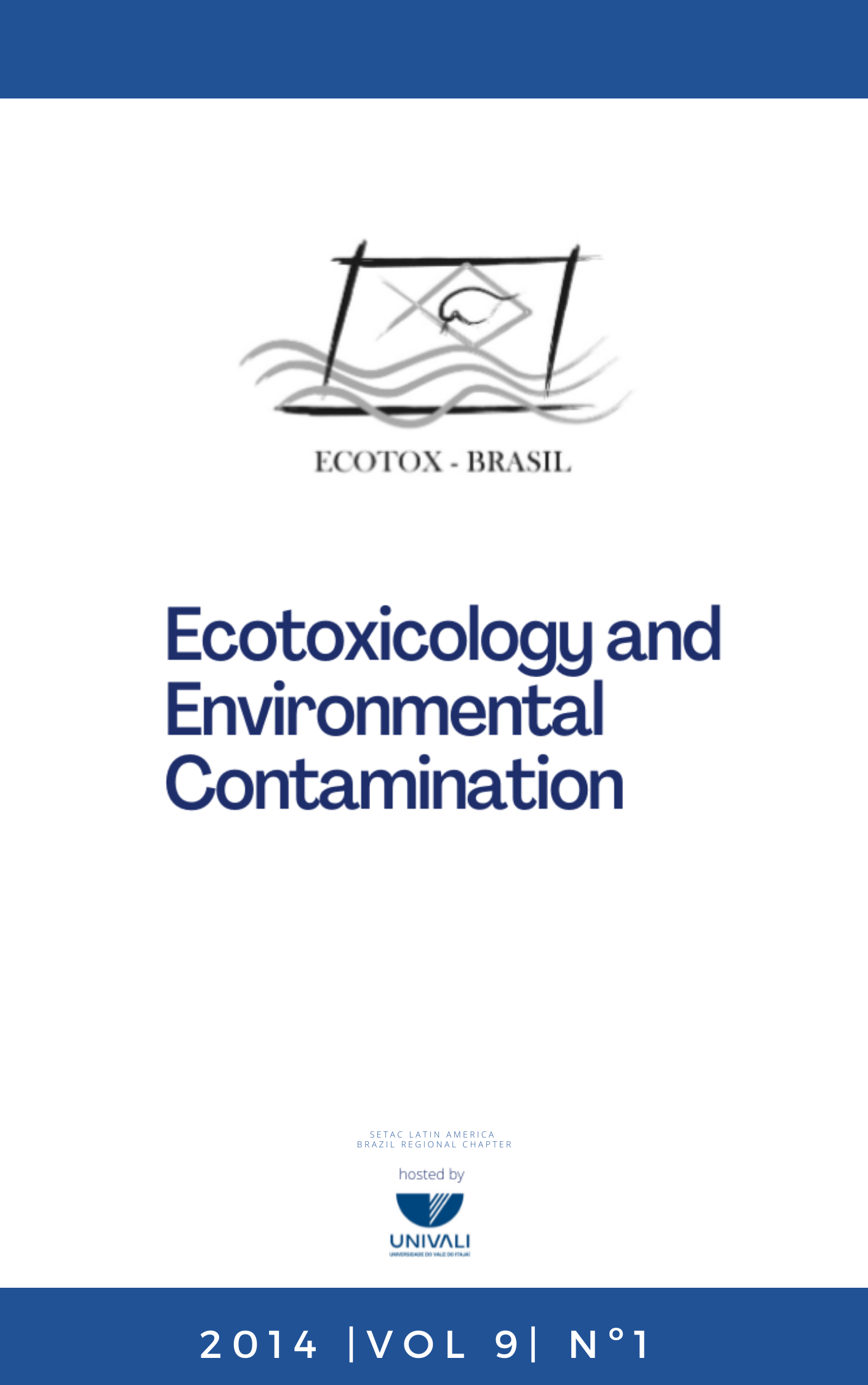Tratamento biológico de formaldeído: toxicidade residual monitorada por bioensaios com Daphnia similis
DOI:
https://doi.org/10.5132/eec.2014.01.010Abstract
Formaldeído é encontrado naturalmente no ambiente e pode atingir concentrações de até 4000 mg L-1 em efluentes industriais. Embora germicida, pesquisas indicam sua possível degradação biológica em sistemas de tratamento, destacando-se os reatores com biomassa aderida e metabolismo aeróbio ou anaeróbio. Esse estudo verifica a eficiência físico-química e capacidade de redução da concentração de formaldeído adicionado a esgoto sanitário no tratamento biológico combinado (anaeróbio e aeróbio), e avalia a toxicidade aguda residual ao microcrustáceo Daphnia similis, em amostras de sistema composto por filtro anaeróbio (FA), biofiltro aerado submerso (BAS), ambos de leito fixo e fluxo ascendente, seguido de decantador secundário, nas fases: formaldeído afluente: 200 mg L-1 (F1: 7 bioensaios) e 400 mg L-1 (F2: 8 bioensaios). A eficiência de remoção de DQO e DBO foi de 93±4% e 97±2% (F1) e 93±7% e 99±1% (F2), respectivamente; a redução de formaldeído foi de 100% (F1) e 99,8±0,3% (F2). A toxicidade aguda (CE50-48h) foi de 7,22% e 3,40% (afluente), >67% e >60% (efluente FA), para F1 e F2, respectivamente. O efluente final não apresentou toxicidade aguda, comprovando a robustez do sistema combinado e a importância de tecnologias que visam à destinação adequada de resíduos e à proteção da vida aquática.
Downloads
Downloads
Published
How to Cite
Issue
Section
License
Copyright © 2006 ECOTOX-Brasil
Copyright notice: It is a condition for publication that manuscripts submitted to this journal have not yet been published and will not be simultaneously submitted or published elsewhere. By submitting a manuscript, the authors agree that copyright for their article is transferred to the Sociedade Brasileira de Ecotoxicologia (ECOTOX-Brasil) if and when the article is accepted for publication. The copyright covers the exclusive rights to reproduce and distribute articles, including reprints, photographic reproductions or any other reproduction of a similar nature, including translations. No part of this publication may be reproduced, stored in a retrieval system or transmitted in any form or by any means, electronic, mechanical, photocopying, recording or otherwise, without permission of the publisher.
Notice: While every effort is made by the EEC, editors and editorial board to see that no inaccurate or misleading data, opinions or statements appear in this journal, they wish to make it clear that the contents of the articles and advertisements published herein are the sole responsibility of the contributors or advertisers concerned. Accordingly, the EEC, the editorial board and editors and their respective employees, officers and agents accept no responsibility or liability whatsoever for the consequences of any inaccurate or misleading data, opinion or statement.




